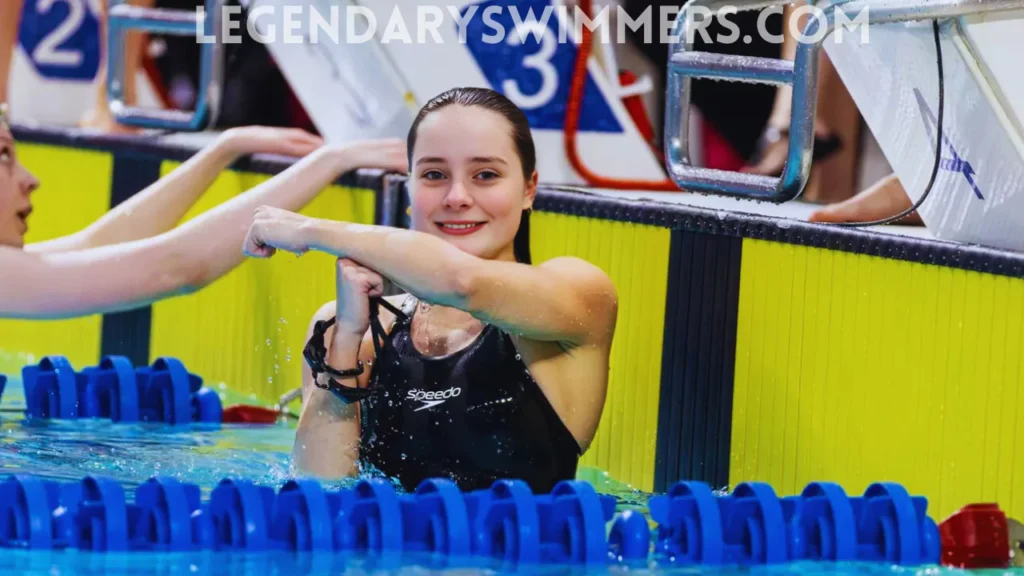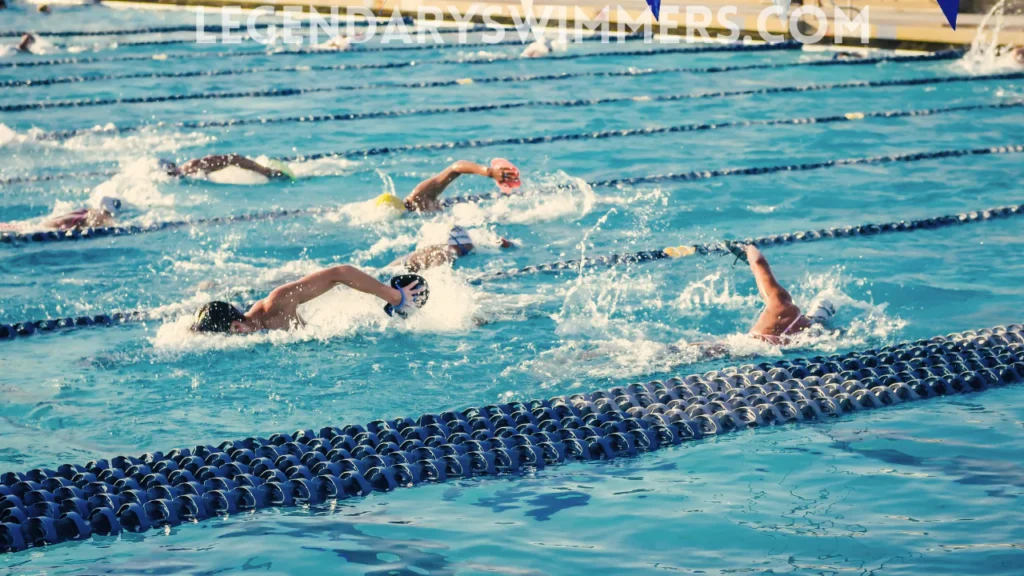Swimming is one of the most enjoyable and beneficial forms of exercise, but it’s not uncommon to experience stomach discomfort afterwards. Whether you’re dealing with cramps, nausea, bloating, or other digestive issues, post-swimming stomach pain can quickly turn a refreshing dip into an uncomfortable experience. This guide explores why your stomach might hurt after swimming, how to prevent these issues, and what treatments work best for different situations.
- Common Causes of Stomach Pain After Swimming
- Specific Stomach Problems After Swimming
- Ocean and Lake Swimming Stomach Problems
- Female-Specific Concerns: Uterus Pain After Swimming
- Prevention Strategies for Swimming-Related Stomach Pain
- How to Get Rid of Stomach Cramps After Swimming
- How to Stop Feeling Sick After Swimming
- Warning Signs That Require Immediate Care
- Preventing Flu-Like Symptoms After Swimming in Pools
- FAQs
- Conclusion:
Common Causes of Stomach Pain After Swimming
Stomach discomfort following a swim session can stem from various factors, ranging from the swimming environment to personal physiology. Understanding these causes is the first step toward prevention and relief.
Swallowing Pool or Lake Water
One of the most common culprits behind post-swimming stomach pain is inadvertently swallowing water while swimming. When swimmers swallow pool water, they’re not just ingesting water, but also a mixture of chemicals, including chlorine, which can irritate the stomach lining and lead to discomfort.
According to the Experts, swimmers may ingest roughly 32ml of water per hour while swimming.
Recreational Water Illnesses (RWIs)
Recreational Water Illnesses are diseases caused by germs and chemicals found in water that people swim in or play in. The CDC reports that RWIs have been increasing over the past two decades.
- Cryptosporidium (Crypto): A parasite highly tolerant to chlorine, it causes diarrhea and stomach cramps
- Giardia: Another parasite that causes intestinal symptoms and can survive in properly treated water
- E. coli: Bacteria commonly found in lakes and oceans, causes severe stomach pain and diarrhea
- Norovirus: The highly contagious virus that causes inflammation of the stomach and intestines
Among swimmers, 6.6% reported gastrointestinal (GI) illness compared with 5.5% of non-swimmers.
(Source: NIH)
Exercise-Induced Digestive Issues
The physical act of swimming itself can trigger stomach discomfort, particularly for intense swimmers or those new to the activity.
- Blood Flow Redirection: During exercise, blood is diverted away from the digestive system to the muscles, potentially causing digestive slowdown
- Mechanical Jostling: The motion of swimming, especially certain strokes, can physically shake the digestive organs
- Abdominal Muscle Strain: Particularly common in butterfly and breaststroke, which require significant core engagement
- Increased Gut Permeability: Intense exercise can temporarily increase intestinal permeability, allowing toxins to enter the bloodstream
Research from the International Institute of Health indicates that up to 70% of endurance athletes experience some form of gastrointestinal symptoms during or after exercise.
Pre-Swim Eating Habits
What and when you eat before swimming plays a crucial role in your digestive comfort afterwards.
- Eating Too Close to Swimming: Digestion requires energy and blood flow—both of which are diverted during exercise
- High-Fiber Foods: Can cause gas and bloating, which may be exacerbated by the physical pressure of swimming
- Fatty Foods: Slow digestion and can lead to feelings of heaviness and nausea
- Dairy Products: May cause issues for those with lactose sensitivity, especially when combined with exercise
Sports Dietitians Australia recommends: “Aim to eat a light, carbohydrate-rich meal 2-3 hours before swimming, or a small snack 30 minutes prior if necessary. Avoid new foods before important swims or competitions.“
Cold Water Shock
Swimming in cold water can trigger a range of physiological responses that affect the digestive system.
- Vasoconstriction: Blood vessels narrow in response to cold, affecting blood flow to digestive organs
- Stress Response: Cold water activates the body’s stress response, which can halt digestion
- Muscle Contractions: Cold can cause abdominal muscles to contract involuntarily, leading to cramps
- Thermal Shock: Rapid temperature change can cause digestive distress
A study in the Journal of Physiology found that exposure to water colder than 15°C can provoke a cold shock response. This reaction typically involves rapid, uncontrolled breathing, a sudden surge in heart rate and blood pressure, and may trigger an involuntary gasp, all of which increase the risk of drowning.
Swimmer’s Cramps
Muscle cramps during or after swimming can affect the abdominal area and be mistaken for digestive issues.
- Dehydration: Common during swimming as people often don’t realize they’re sweating
- Electrolyte Imbalance: Loss of essential minerals needed for proper muscle function
- Fatigue: Overexertion of abdominal muscles, particularly in novice swimmers
- Sudden Temperature Changes: Moving between different temperature zones in water
Specific Stomach Problems After Swimming
Swimmer’s Diarrhea
This condition, sometimes called “swimmer’s stomach,” refers to loose stools or diarrhea that occurs after swimming, particularly in natural bodies of water.
- Prevalence: Affects approximately 1 in 8 swimmers in natural bodies of water
- Onset: Typically begins 12-48 hours after exposure
- Duration: Usually resolves within 1-3 days without treatment
- Common Causes: Ingestion of bacteria, parasites, or viruses present in water
Gastroenteritis from Swimming
Swimming-related gastroenteritis involves inflammation of the stomach and intestines, leading to a combination of symptoms.
- Symptoms: Nausea, vomiting, diarrhea, stomach cramps, and sometimes fever
- Common Culprits: Norovirus, rotavirus, E. coli, and Salmonella
- Risk Factors: Swimming in contaminated water, swallowing large amounts of water, compromised immune system
- Recovery Time: Typically 2-7 days depending on the pathogen and individual health
The Environmental Protection Agency estimates that up to 3.5 million people get sick each year from contact with recreational water contaminated with sewage.
Bloating and Gas After Swimming
Many swimmers report increased gas and bloating following swim sessions, often referred to as “swimmer’s bloat.”
- Air Swallowing: Common during breathing patterns in swimming, especially for beginners
- Pressure Changes: Water pressure on the abdomen can affect how gas moves through the intestines
- Exercise-Induced Gut Changes: Altered gut motility during exercise can lead to gas accumulation
- Post-Exercise Eating: Rapid consumption of food or beverages after swimming can introduce excess air
Child-Specific Stomach Issues After Swimming
Children are particularly prone to stomach discomfort after swimming due to several factors.
- Higher Likelihood of Swallowing Water: Less-developed swimming techniques
- Immature Digestive Systems: More sensitive to irritants and pathogens
- Different Eating Patterns: Often swimming shortly after eating or consuming inappropriate pre-swim foods
- Communication Challenges: Difficulty articulating the exact nature of their discomfort
According to U.S. Environmental Protection Agency, Children swallow up to twice as much water per body weight as adults while swimming, putting them at higher risk for water-related stomach issues.
Ocean and Lake Swimming Stomach Problems
Natural bodies of water present unique challenges and potential stomach issues compared to pools.
Ocean Swimming and Digestive Distress
Ocean swimming can sometimes lead to digestive distress due to several factors. For example, ingesting salt water may trigger osmotic diarrhea as the salt draws water into the intestines. In addition, marine pathogens, including various Vibrio species and other bacteria, can cause severe gastrointestinal illnesses. Algal blooms, often responsible for red tides, produce toxins that further contribute to digestive discomfort.
Moreover, pollution from urban runoff, sewage overflows, and other contaminants increases the overall risk of illness for ocean swimmers.
Lake Swimming Digestive Issues
Freshwater bodies can harbor a range of pathogens and contaminants that may lead to digestive issues. For instance, freshwater amoebas, such as Entamoeba histolytica, can cause amebic dysentery, while blue-green algae produce toxins that may result in severe stomach pain, vomiting, and diarrhea.
Beaver fever—caused by giardiasis, which is common in lakes with high wildlife activity—can lead to prolonged digestive problems. Furthermore, agricultural runoff can introduce harmful bacteria and parasites into lake water, further increasing the risk of gastrointestinal illness.
Female-Specific Concerns: Uterus Pain After Swimming
Some female swimmers report pelvic or lower abdominal pain that feels like it originates from the uterine area.
- Cold Water Effects: Cold water can cause uterine muscle contractions similar to menstrual cramps
- Exercise-Induced Endometriosis Pain: Swimming may exacerbate existing endometriosis symptoms
- Pelvic Floor Pressure: Water pressure combined with certain swimming strokes can stress the pelvic floor
- Swimming During Menstruation: Can sometimes increase cramping or discomfort
Prevention Strategies for Swimming-Related Stomach Pain
Minimizing water ingestion is key to preventing post-swimming stomach issues. Focus on proper breathing techniques—exhale underwater and inhale above water—and consider using nose clips, especially if you’re a beginner or doing flip turns.
Additionally, practicing a controlled, regular breathing pattern and taking professional swim lessons can significantly reduce accidental water swallowing.
Safe Swimming Location Selection
Choosing appropriate swimming locations can significantly reduce your risk of stomach issues.
For Pool Swimming:
- Public pools should have recent health department inspections
- You should be able to clearly see the drain at the pool’s deepest point
- Paradoxically, a strong chlorine smell indicates poor maintenance (chloramines)
- Edge areas, ladders, and changing facilities should be clean
For Natural Waters:
- Health departments issue warnings about water quality
- Avoid Swimming After Heavy Rain
- Look for Warning Signs: Algal blooms, dead fish, or murky water
- Research Water Quality History: Some areas have chronic contamination issues
It is recommended to check local beach report cards or lake water quality reports before swimming.
Pre-Swim Nutrition Guidelines
What you eat before swimming can significantly impact your comfort during and after your swim.
- Timing: Eat a substantial meal 2-3 hours before swimming, or a light snack 30-60 minutes before
- Composition: Focus on easily digestible carbohydrates with moderate protein and low-fat
- Hydration: Drink 16-20 oz of water 2 hours before swimming
- Foods to Avoid: Beans, cruciferous vegetables, dairy (if sensitive), spicy foods, and high-fiber items
Proper Hydration for Swimmers
Maintaining hydration is crucial for preventing cramps and digestive issues.
- Pre-Swimming: 16-20 oz of water 2 hours before swimming
- During Swimming: 4-8 oz every 15-20 minutes for sessions longer than 30 minutes
- Post-Swimming: 16-24 oz for every pound of weight lost during swimming
- Electrolyte Replacement: Particularly important for sessions longer than 60 minutes or in warm water
Research from the Journal of the International Society of Sports Nutrition indicates that even mild dehydration (1-2% of body weight) can significantly increase the risk of exercise-induced gastrointestinal symptoms.
Gradual Adaptation to Cold Water
For those swimming in colder waters, proper acclimatization is essential.
- Progressive Exposure: Start with short immersions and gradually increase time
- Proper Warm-Up: Warm muscles are less likely to cramp
- Wetsuit Use: Provides insulation and reduces cold shock
- Pre-Swim Warm Beverages: Can help prepare the body for temperature change
How to Get Rid of Stomach Cramps After Swimming
If you’re already experiencing post-swimming stomach discomfort, several approaches can help alleviate symptoms.
Immediate Relief Strategies
- Gentle Abdominal Massage: Clockwise circular motions to help move gas
- Warm Compress: Applied to the stomach area to relax muscles
- Proper Hydration: Small, frequent sips of room-temperature water
- Relaxed Breathing: Deep, diaphragmatic breathing to reduce muscle tension
STERIS recommends: “Lie on your left side with knees slightly bent while applying a warm compress to the abdomen. This position facilitates gas movement and can provide relief within 15-20 minutes.”
Natural Remedies for Swimming-Related Stomach Pain
Many swimmers prefer natural approaches to managing digestive discomfort:
- Ginger Tea: Contains compounds that help relax gastrointestinal muscles
- Peppermint: Has antispasmodic properties that can reduce cramping
- Chamomile Tea: Anti-inflammatory and calming for the digestive tract
- Activated Charcoal: Can absorb gas and toxins (take away from medications)
A study in the Journal of Pain found that ginger was as effective as some over-the-counter medications for relieving exercise-induced gastrointestinal discomfort.
How to Stop Feeling Sick After Swimming
Nausea is a common complaint after swimming sessions:
- Sit Upright: Avoid lying flat immediately after swimming
- Fresh Air: Move to a well-ventilated area
- Small Sips of Water: Avoid gulping large amounts of fluid
- Ginger: Chew on crystallized ginger or sip ginger tea
Dealing with Bloating After Swimming
To address the common issue of post-swim bloating:
- Gentle Walking: Helps stimulate digestive movement
- Abdominal Stretches: Child’s pose or gentle twists
- Avoid Carbonated Beverages: Can add to gas problems
- Consume Fennel or Caraway: Natural anti-bloating herbs
Reducing Gas and Flatulence After Swimming
Many swimmers report increased gas production after swimming:
- Avoid Post-Swim Gassy Foods: Beans, carbonated drinks, dairy
- Eat Slowly: Rapid eating introduces more air
- Activated Charcoal: Can help absorb excess gas
- Peppermint Oil Capsules: Reduce gas formation in the intestines
Open Water Swimmers vs. Pool Swimmers
Different swimming environments create different digestive challenges:
Open Water Swimmers:
- Higher risk of pathogen exposure
- Challenges from temperature variations
- Wave action can increase water swallowing
- Limited access to facilities if symptoms develop
Pool Swimmers:
- Chemical irritation from chlorine and other disinfectants
- More controlled environment but potential for higher swimmer density
- Greater temperature consistency
- Easier access to facilities if symptoms develop
Warning Signs That Require Immediate Care
While most swimming-related stomach discomfort resolves on its own, some symptoms warrant medical attention:
- Bloody stool or vomit: May indicate infection or tissue damage
- Severe abdominal pain: Especially if localized to one area or accompanied by fever
- Signs of dehydration: Excessive thirst, dry mouth, decreased urination, dizziness
- High fever: Temperature above 101°F (38.3°C)
- Symptoms lasting more than 48-72 hours: Indicates a potentially serious condition
Severe abdominal pain that comes on suddenly, especially if accompanied by fever or bloody stools, should never be ignored, regardless of recent swimming activity.
Preventing Flu-Like Symptoms After Swimming in Pools
Swimmers in poorly maintained indoor pools are indeed more likely to experience flu-like symptoms compared to those in properly maintained facilities, often due to exposure to irritants and potential pathogens. The following factors can contribute to these symptoms:
-
Chloramine Exposure:
Chloramines form when chlorine reacts with sweat and urine, potentially causing respiratory and systemic symptoms. -
Pool Chemical Imbalance:
Improper chemical levels may lead to irritation and various systemic reactions. -
Indoor Pool Air Quality:
Poor ventilation can concentrate airborne chemicals, exacerbating symptoms. -
Cryptosporidium Exposure:
This pathogen can cause flu-like symptoms along with gastrointestinal issues.
Preventive Strategies
-
Showering Before Swimming:
Rinsing off helps remove organic compounds that react with chlorine. -
Choose Well-Ventilated Pools:
Opt for indoor facilities with good air circulation to minimize airborne irritants. -
Stay Hydrated:
Adequate hydration helps flush out potential irritants from your system. -
Avoid Pools with Strong Chemical Smells:
A strong odor often indicates poor maintenance and an imbalance of pool chemicals.
FAQs
Q: Why Does Swimming Hurt My Stomach?
A: Swallowing contaminated water (chlorine, bacteria), dehydration, or cold shock.
Q: Why Does Ocean Water Upset My Stomach?
A: Saltwater causes diarrhea. Pathogens (Vibrio) + pollution raise risks.
Q: How do you Check If a Pool Is Safe?
A: Ensure the water is clear enough to see the drain, verify there’s no strong chlorine smell, and review the latest inspection reports.
Q: Best Pre-Swim Snack?
A: Bananas, oatmeal, or toast. Avoid dairy/fatty foods.
Q: Are Pool Chemicals Dangerous?
A: Chlorine irritates but isn’t deadly. Strong smells = poor maintenance (chloramines).
Q: Why Do Open Water Swimmers Get Sick More?
A: Pathogens + waves = more water swallowed. Pools have chemicals, fewer germs.
Q: Does Dehydration Cause Swim Cramps?
A: Yes. Rehydrate with electrolytes post-swim.
Conclusion:
Swimming remains one of the best full-body exercises, offering numerous health benefits when practiced safely. By understanding what causes stomach discomfort after swimming and following key preventive strategies—such as proper swimming techniques, choosing quality swimming locations, adhering to pre-swim nutrition, staying hydrated, and knowing when to seek medical attention—you can enjoy this activity without digestive distress.
At Legendary Swimmers, we provide expert tips, guidance, and resources to help you swim confidently and comfortably, no matter your age or ability.
References








